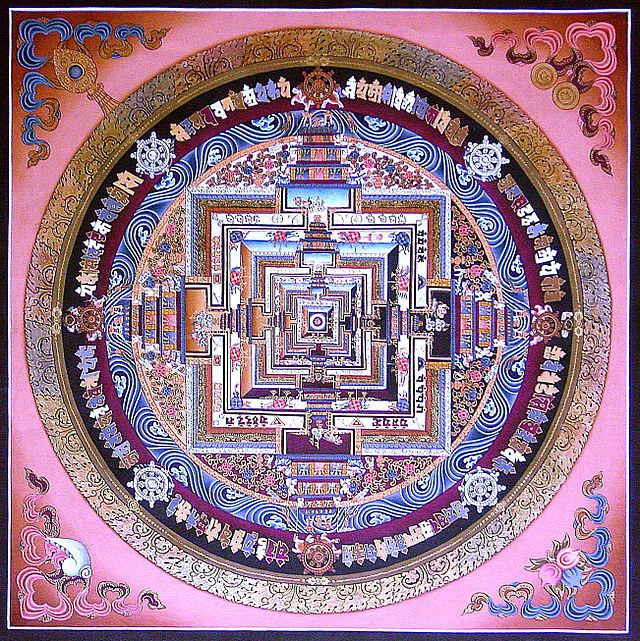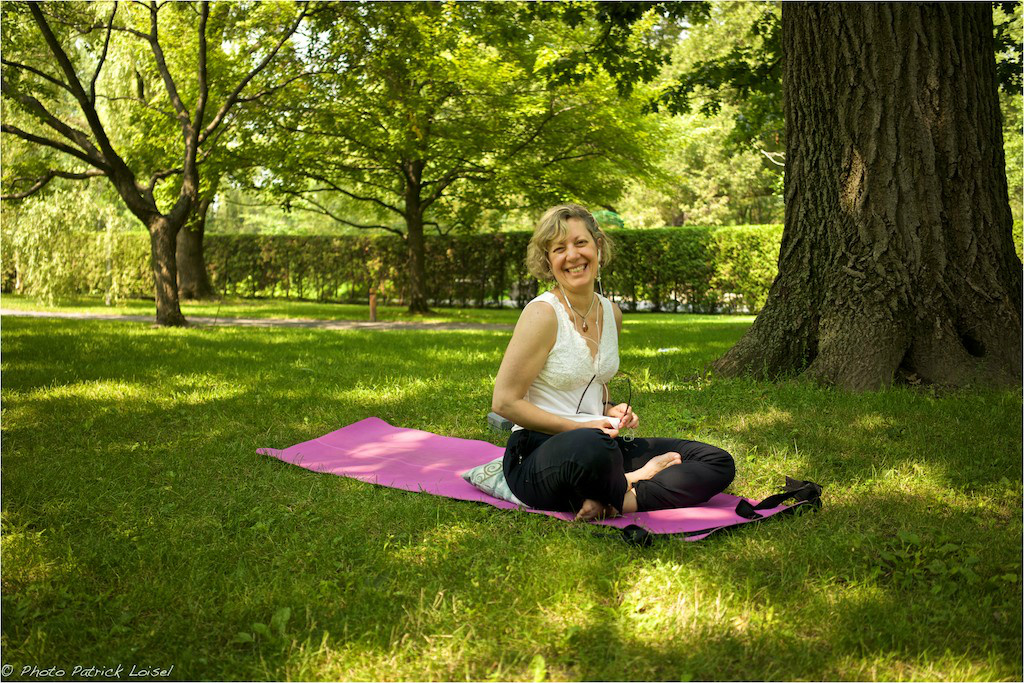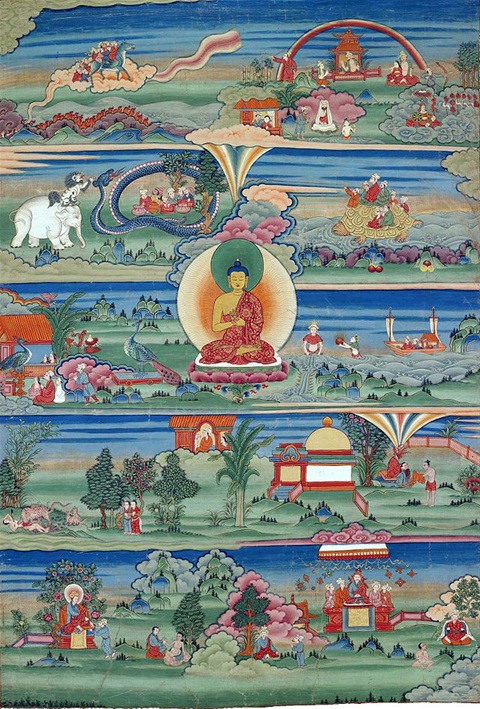ZEN: THE CONNECTION BETWEEN EMOTIONS AND MEDITATION
ZEN: ABOUT EMOTIONS AND MEDITATION
Quotes from
Thich Nhat Hanh in Peace is every step, the path of mindfulness in Everyday life, Ed. Batam Books USA 1991
THE RIVER OF FEELINGS: THE ATTITUDE OF LETTING GO
Our feelings play a very important part in directing all of our thoughts and actions. In us, there is a river of feelings, in which every drop of water is a different feeling, and each feeling relies on others for its existence. To observe it, we just sit on the bank of the river and identify each feeling as it surfaces, flows by, and disappears.
There are tree sorts of feelings- pleasant, unpleasant and neutral. When we have an unpleasant feeling, we may want to chase it away. But is more effective to return to our conscious breathing and just observe it, identifying it silently to ourselves: “ Breathing in, I know there is an unpleasant feeling in me. Breathing out I know there is an unpleasant feeling in me. Calling by its name such as “anger”, “sorrow” , “joy” or “happiness”, helps us identify it clearly and recognize it more deeply.
We can use our breathing to be in contact with our feelings and accept them. If our breathing is light and calm- a natural result of conscious breathing- our mind and body will slowly become light, calm and clear. Mindful observation is based on the principle of non-duality: our feeling is not separate from us or caused merely by something outside us, our feeling is us, and for the moment we are that feeling. We are neither drowned in nor terrorized by the feeling, nor do we reject it. Our attitude of not clinging to or rejecting our feelings is the attitude of letting go, an important part of meditation practice.
If we face our unpleasant feelings with care, affection, and nonviolence, we can transform them into the kind of energy that is healthy and has the capacity to nourish us.
By the work of mindful observation, our unpleasant feelings can illuminate so much for us, offering us insight and understanding into society and ourselves. P.51, 52
WHAT’S NOT WRONG
We often ask, “What’s wrong?” Doing so, we invite painful seeds of sorrow to come up and manifest. We feel suffering, anger and depression, and produce more such seeds. We would be much happier if we tried to stay in touch with the healthy, joyful seeds inside of us and around us. We should learn to ask, “What’s not wrong and be in touch with that. P.77
Compassion means, literally, to suffer with. We have to find ways to nourish and express our compassion. p82
PRESENT MOMENT’ WONDERFUL MOMENT:
CONSCIOUS BREATHING
SUCHNESS
In Buddhism, the word “suchness” is used to mean “the essence or particular characteristic of a thing or person, its true nature”. Each person has his own suchness. If we want to live in peace and happiness with a person, we have to see the suchness of that person. Once we see it, we understand him or her, and there will be no trouble. We can live peacefully and happily together.
Quotes from
PEMA CHODRON in WHEN THINGS FALL APART, Heart advice for difficult times Ed. Shambhala, Boston, 2000
RELAX AS IT IS :
Life is a good teacher and a good friend. Things are always in transition, if we could only realize it. Nothing ever sums itself up in the way we like to dream about. The off-center,
In between state is an ideal situation, a situation in which we don’t get caught and we can open our hearts and mind beyond limit. It’s a very tender, non-aggressive, open-ended state off affairs.
To stay with that shakiness- to stay with a broken heart, with a rumbling stomach, with the feeling of hopelessness and wanting to get revenge- that is the path (…).P.10
“Love of the truth puts you on the spot” p.7
“ When you have made good friends with yourself, your situation will be more friendly too”.
P.7
“ This very moment is the perfect teacher, and it’s always with us” is really a most profound instruction. Just seeing what’s going on- that’s the teaching right there. We can be with what’s happening and not dissociate. Awakeness is found in our pleasure and our pain, our confusion and our wisdom, available in each moment of our weird, unfathomable, ordinary everyday lives.” P. 17
“It’s a transformative experience to simply pause instead of immediately filling up the space. By waiting, we begin to connect with fundamental restlessness as well as fundamental spaciousness.” P.33
STAYING AWAKE:
This post is about the connection between emotions and meditation;
“ Well-being of mind is like a mountain without ripples. When the lake has no ripples, everything in the lake can be seen. When the water is all churned up, nothing can be seen.
The still lake without ripples is an image of our minds at ease, so full of unlimited friendliness for all the junk at the bottom of the lake that we don’t feel the need to churn up the waters to avoid looking what’s there. Not causing harm requires staying awake.”p.37
THE MOUNTAIN POSE:
“Many things comes and go on this mountain, but it just sits there. When we’ve seen ourselves completely, there’s a stillness of body that is like a mountain.”
This post is about the connection between emotions and Yoga;
YE TANG CHE
This post is about the connection between emotions and Yoga:
“In Tibetan there’s an interesting word: ye tang che. The ye part means “totally, completely”, and the rest of it means “exhausted”. Altogether ye tang che means totally tired out. We might say “totally fed up.” It describes an experience of complete hopelessness, of completely giving up hope. This is an important point. This is the beginning of the beginning. Without giving up hope- that there’s somewhere better to be, that there’s someone better to be- we will never relax with where we are or who we are.” P.38
Quotes from
KUNDTZ David in Quiet mind, Conari Press, Canada, 1977
STOP AND SMELL THE ROSES…
“There is a secret bond between slowness and memory, between speed and forgetting”.
Milan Kundera p.87
“Life just is. You have to flow with it, give yourself to the moment. Let it happen.”
Jerry Brown, p.103.
QUIETING YOUR DAY
“Got a problem to solve? Leave it and take a walk. P.77
BIRD AND BOOK:
When the bird and the book disagree, always believe the bird p.287
Bird watcher’s proverb
KUNDTZ David in Quiet mind, Conari Press, Canada, 1977
Quotes from
The pocket Pema Chodron, Shambhala, London 2008
NOT KNOWING IS PART OF THE ADVENTURE
We can try to control the uncontrollable by looking for security and predictability, always hoping to be confortable and safe. But the truth is that we can never avoid uncertainty. This not knowing is part of the adventure, and it’s also makes us afraid.
Bodhichitta training offers no promise of happy endings. Rather, this “I” who wants to find security-who wants something to hold on – can finally learn to grow up. The central question (…) is not how we avoid uncertainty and fear, but how we relate to discomfort. How do we practice with difficulty, with our emotions, with the unpredictable encounters of an ordinary day? P.6
HEART
Bodichitta is a Sanskrit word that means “ noble or awakened heart”. It is said to be present in all beings, just as butter is inherent in milk and oil is inherent in a sesame seed. This soft spot is inherent in you and me.
It is said that in difficult times, it is only Bodichitta that heals. When inspiration has become hidden, when we feel ready to give up, this is the time when healing can be find in the tenderness of pain itself. This is the time to touch the genuine heart of the Bodichitta. In the midst of loneliness, in the midst of fear, in the middle of feeling misunderstood and rejected is the heartbeat of all things, the genuine heart of sadness
. Just as a jewel that has been buried in the earth for a million years is not discolored or harmed, in the same way this noble heart is not affected by all of our kicking and screaming. The jewel can be brought into light at any time, and it will glow as brilliantly as if nothing had ever happened. No matter how committed to unkindness, selfish or greed, the genuine heart of the bodhichitta cannot be lost. It is there in all that lives, never marred and completely whole. p.2


